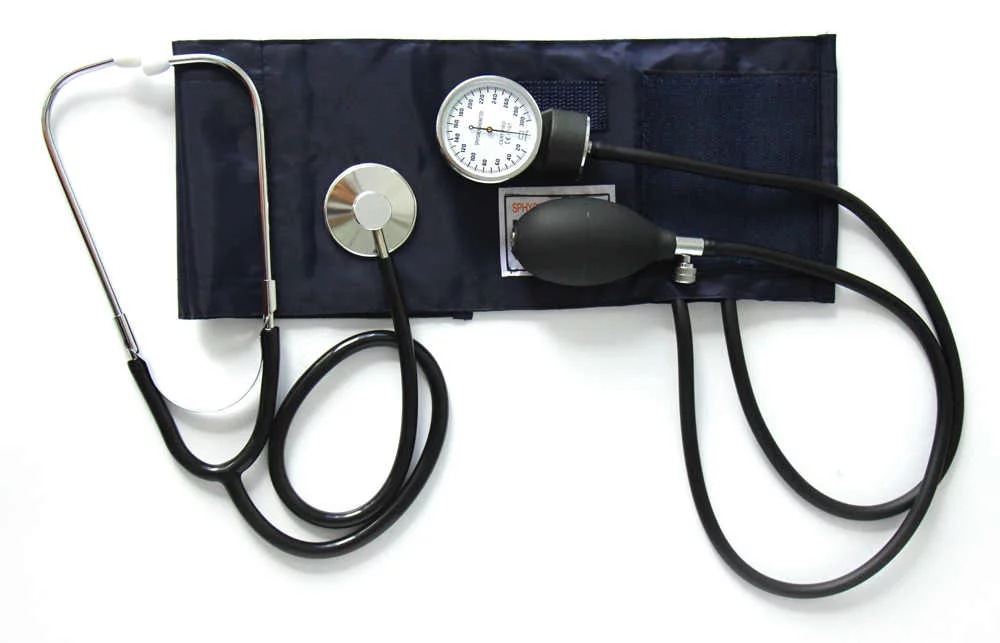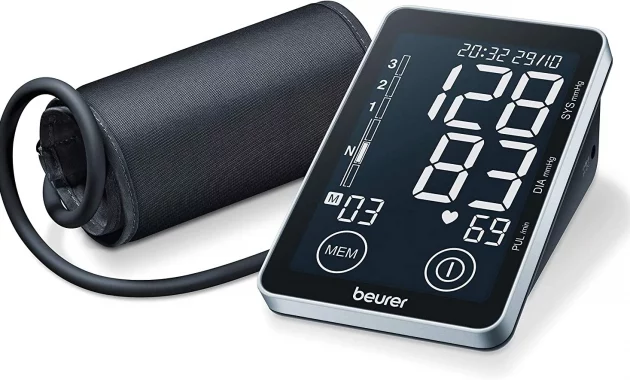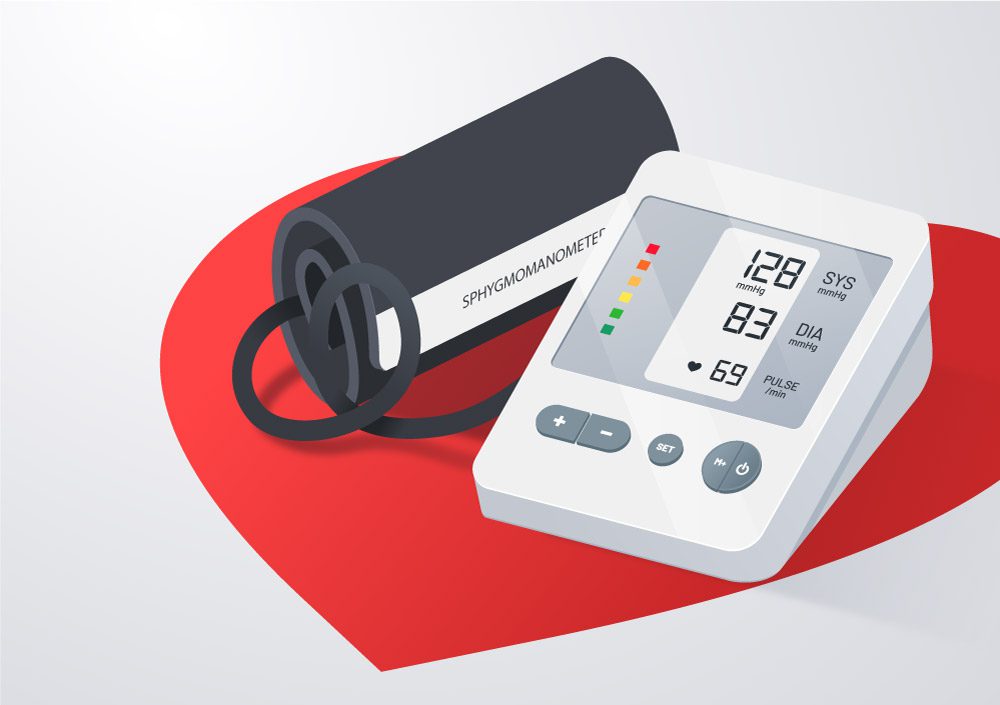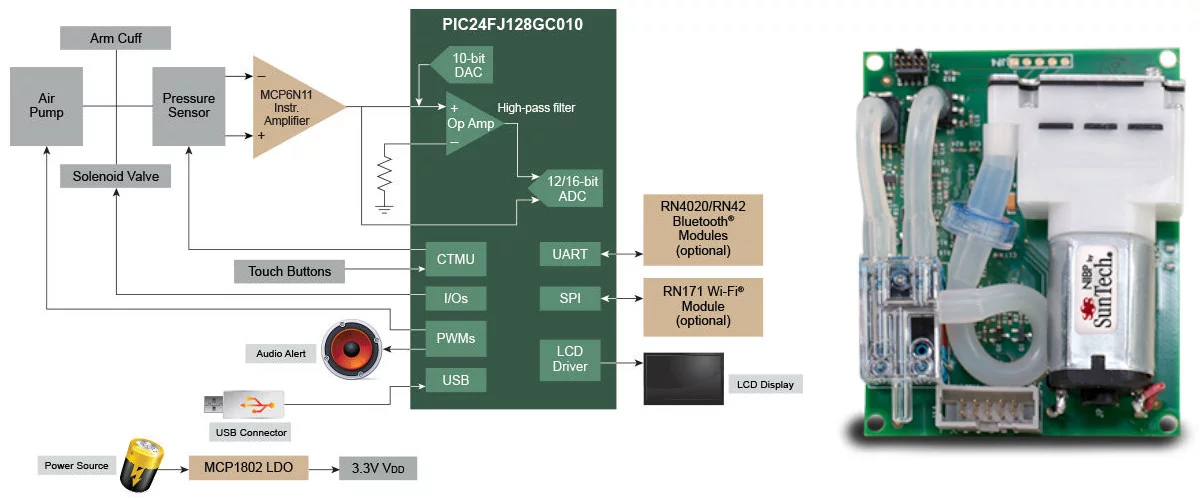The proper scientific name for blood pressure monitoring devices is sphygmomanometer, which is generally difficult to pronounce, another name for blood pressure monitors is Blood Pressure Monitor
For decades, doctors used a manually inflated air sac cuff and a listening device called a stethoscope to listen for the sound of the artery walls. This is known as the auscultatory method of measuring blood pressure. Using this method requires some practice and is usually done by a trained medical practitioner. This monitor is often called an aneroid sphygmomanometer.
Blood pressure is a vital sign component. The results of blood pressure measurements affect decisions related to medical management and action. Tools that can be used to measure blood pressure include a mercury manometer , aneroid sphygmomanometer , and digital sphygmomanometer .

Recent advances in medical technology have paved the way for inexpensive and easy-to-use digital sphygmomanometers that anyone can use in the comfort of their home without any special knowledge or training.
The Digital Blood Pressure Monitor uses an inflatable air bag cuff, a battery powered air pump, and a pressure sensor to sense the vibrations of the artery walls to measure the blood pressure in the arteries. This is known as the oscillometric method.
There are two types of Digital Blood Pressure Monitor namely the upper arm model (shown above) and the wrist model(shown below). Upper arm models have a cuff that sits on the upper arm and is connected by a tube to a monitor that rests on the surface near the arm. Wrist models are smaller and the entire unit wraps around the wrist. Regardless of the type of the two types of digital sphygmomanometer, the function and measurement method remains the same.
How Do Digital Blood Pressure Monitor Work?
The digital sphygmomanometer has an air pump driven by a microprocessor . The microprocessor will automatically pump air into the cuff about 20 mmHg above the average systolic pressure (about 120 mmHg). After the microprocessor captures sufficient pressure, the knob on the sphygmomanometer will automatically loosen and the air pressure in the cuff will decrease slowly.
When the ordering process takes place, an oscilometric wave will appear which will be recorded by the instrument. This oscillometric wave is converted automatically by the device as systolic blood pressure, diastolic blood pressure, pulse pressure, and mean arterial pressure (MAP). The point where the oscillometric wave appears first will be read as systolic blood pressure, while the point where the oscilometric wave begins to disappear will be read as diastolic blood pressure.
The signal from the pressure sensor is conditioned by the instrumentation amplifier prior to data conversion by the analog-to-digital converter (ADC). The systolic pressure, diastolic pressure, and pulse rate are then calculated in the digital domain using the appropriate algorithm for the type of monitor and sensor being used. The resulting systolic, diastolic and pulse rate measurements are displayed on a liquid crystal display (LCD), added with time and stored in a non-volatile memory.
User Interface
Most Digital Blood Pressure Monitor use a simple monochrome LCD with 100 segments or less that can be driven by a driver integrated in the microcontroller. Backlight can be added using one or more white light emitting diodes (LEDs).
One or more pushbuttons and/or physical switches are typically used to turn the power on and off and to initiate blood pressure measurements.
High-end Digital Blood Pressure Monitor can use a color LCD with a touch screen to implement advanced user interfaces such as on-screen virtual buttons, touch menus, graphics, animations, etc.

Audible notifications in the Digital Blood Pressure Monitorcan be provided with a simple beep driven by one or two pins of the micro controller port which has pulse width modulation (PWM) capability. More advanced sound announcements can be achieved by adding an audio digital-to-analog converter (DAC) and amplified speakers.
Connectivity
In recent years, connectivity, aggregation and sharing of health data have become a trend in the consumer digital health space, especially among younger users.
The connected Digital Blood Pressure Monitor has the ability to upload data to a computer or smartphone for further analysis and tracking of measurements over time. This data transfer is usually done via a USB interface or wirelessly using a Bluetooth Low-Energy radio link.
Advanced Digital Blood Pressure Monitor can also use Wi-Fi and/or cellular wireless networks to upload data to a remote digital health information management system without relying on a computer or smartphone.
Power Management
Upper arm digital sphygmomanometers typically use four AA or AAA alkaline batteries (1.5V) and wrist monitors typically use two AAA alkaline batteries. Alternatively, high-end Digital Blood Pressure Monitor can use rechargeable Li-Ion batteries and plug-in wall chargers similar to those used for smartphones.
To extend battery life, automatic power off after a period of inactivity can be applied. However, the real time clock (RTC) must always be turned on to maintain the current time when the monitor is turned off.



